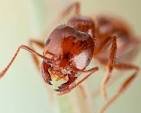Introduction
Termites are often called the “silent destroyers” because they secretly feed on wood, flooring, and even wallpaper. By the time you notice visible damage, the infestation may already be severe. This Termite Control Guide explains termite behavior, warning signs, prevention strategies, and the best treatment methods so you can protect your home from costly repairs.
(Image suggestion: Termites crawling on wood – Alt: Termite Control Guide showing termites damaging wood)
What Are Termites?
Termites are social insects that live in colonies and feed primarily on cellulose, the main component of wood and plant material. A typical colony includes:
- Workers – build tunnels, feed the colony
- Soldiers – protect against predators
- Reproductives (Queens & Kings) – establish and grow new colonies
(Image suggestion: Diagram of termite caste system – Alt: Termite Control Guide explaining termite colony structure)
Termites vs. Ants: Key Differences
Since homeowners often confuse termites with ants, here are quick differences:
- Body Shape: Termites have straight waists, ants have narrow waists
- Wings: Termites’ wings are equal length, ants’ wings are uneven
- Antennae: Termites’ antennae are straight, ants’ are bent
(Image suggestion: Side-by-side photo termites vs ants – Alt: Termite Control Guide showing differences between termites and ants)
Health Risks of Termite Infestations
Although termites don’t spread diseases like mosquitoes or cockroaches, they can still affect your health:
- Allergies & Asthma: Termite droppings and dust can trigger symptoms
- Mold Growth: Termite-damaged wood may develop mold, which can be harmful when inhaled
Signs of a Termite Infestation
Watch for these red flags:
- Mud tubes on walls or foundations
- Hollow-sounding wood
- Discarded wings near windowsills
- Bubbling or uneven paint
- Small piles of sawdust-like material (frass)
(Image suggestion: Mud tubes on a wall – Alt: Termite Control Guide identifying termite mud tubes in homes)
Termite Prevention Tips
- Keep firewood and mulch away from foundations
- Fix leaky pipes and eliminate moisture sources
- Seal foundation cracks and entry points
- Schedule annual inspections by professionals
(Image suggestion: Homeowner sealing cracks – Alt: Termite Control Guide showing prevention methods)
Termite Control & Treatment Options
If you already have termites, here are the most effective control methods:
- Chemical Barriers: Liquid termiticides create protective zones around your home.
- Bait Stations: Poisoned bait attracts and eliminates entire colonies.
- Fumigation: Effective for severe infestations but requires professional handling.
- Heat Treatment: Uses high temperatures to kill termites in affected areas.

(Image suggestion: Pest control professional applying treatment – Alt: Termite Control Guide showing professional termite treatment)
Internal Links (to connect across your site):
- [Early Signs of Pest Infestations in Homes]
- [Pest Prevention Tips for Families with Pets]
- [Moisture Control Solutions for Basements]
https://pesteraser.in/
External Links (authoritative resources):
- EPA – Termites: How to Identify and Control Them
- CDC – Household Pests
- University of Florida IFAS – Termite Management
Conclusion
Termites may be small, but their impact is massive. With early detection, prevention, and professional control methods, you can stop these pests before they cause serious structural damage. Use this Termite Control Guide as your go-to resource to safeguard your home, health, and peace of mind.




